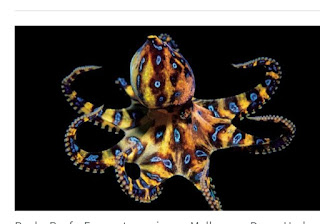The Wonders of Migratory Fish: Navigating the World's Waters.
Introduction
Migratory fish play a crucial role in maintaining the health of aquatic ecosystems, providing The Wonders of Migratory Fish for countless communities, and captivating the imagination of nature enthusiasts. Their incredible journeys across vast oceans and rivers have fascinated scientists and environmentalists for decades. In this article, we will delve into the fascinating world of migratory fish, exploring their unique adaptations, the challenges they face, and the conservation efforts aimed at preserving these remarkable species.join
 |
| The Marvel of Migration |
The Salmons' Upstream Odyssey: Salmon are famous for their extraordinary upstream migrations. After years at sea, they return to their natal rivers to spawn. Overcoming powerful currents and formidable obstacles, such as waterfalls, they make this incredible journey by relying on their acute sense of smell and navigational skills.
Salmon fish
Eels: A Transatlantic Trek: European and American eels undertake one of the longest migrations in the animal kingdom, traveling thousands of miles across the Atlantic Ocean. This journey, which spans several years, is filled with mystery, as scientists are still uncovering the secrets of their migration.
Eels fish
Sturgeon's Quest for Survival: Sturgeon, renowned for their prehistoric lineage, migrate upriver for spawning. This ancient species faces numerous threats, including overfishing and habitat destruction, highlighting the challenges migratory fish encounter.
Sturgeon fish
*The Hilsa(Tenualosa ilisha):Migratory master the Hilsa,scientifically known as Tenualosa ilisha is a highly esteemed and culturally significant fish. Abundant in South Asia, particularly in Bangladesh, India, and Myanmar. Renowned for its delectable taste and distinctive flavor, the Hilsa fish holds a special place in the culinary traditions of the region. Its silvery body and flavorful flesh, often enjoyed when marinated in spices and cooked to perfection, make it a sought-after delicacy. However, the Hilsa's popularity goes beyond the plate, as it has inspired literature, songs, and art, becoming a symbol of cultural pride and heritage. This prized fish, often referred to as the "King of Fish," continues to be a source of livelihood for many and a symbol of tradition and identity in the countries where it is cherished.
Hilsa fish
Challenges and Conservation
Migratory fish face a host of challenges that jeopardize their populations. These challenges include habitat degradation, pollution, climate change, and overfishing. The construction of dams and barriers can also impede their migration routes. To address these issues, various conservation efforts are being undertaken.
Restoration of Critical Habitats: Protecting and restoring the vital habitats that migratory fish depend on is crucial. Efforts are being made to remove obsolete dams and enhance fish passage systems to enable them to complete their journeys.
Sustainable Fisheries Management: Implementing sustainable fishing practices is essential for preserving migratory fish species. Regulations and quotas are being put in place to prevent overfishing and protect these species from depletion.
Climate Change Mitigation: As climate change affects water temperatures and currents, it poses a significant threat to migratory fish. Addressing climate change through reducing greenhouse gas emissions is a key component of their conservation.
Conclusion
Migratory fish, with their epic journeys and extraordinary adaptations, hold a unique place in the natural world. They are not only integral to the balance of aquatic ecosystems but also play a significant role in the cultural and economic aspects of many societies. The conservation of these remarkable species requires a concerted effort from individuals, communities, and nations to ensure that they continue to grace our waters with their presence for generations to come.










